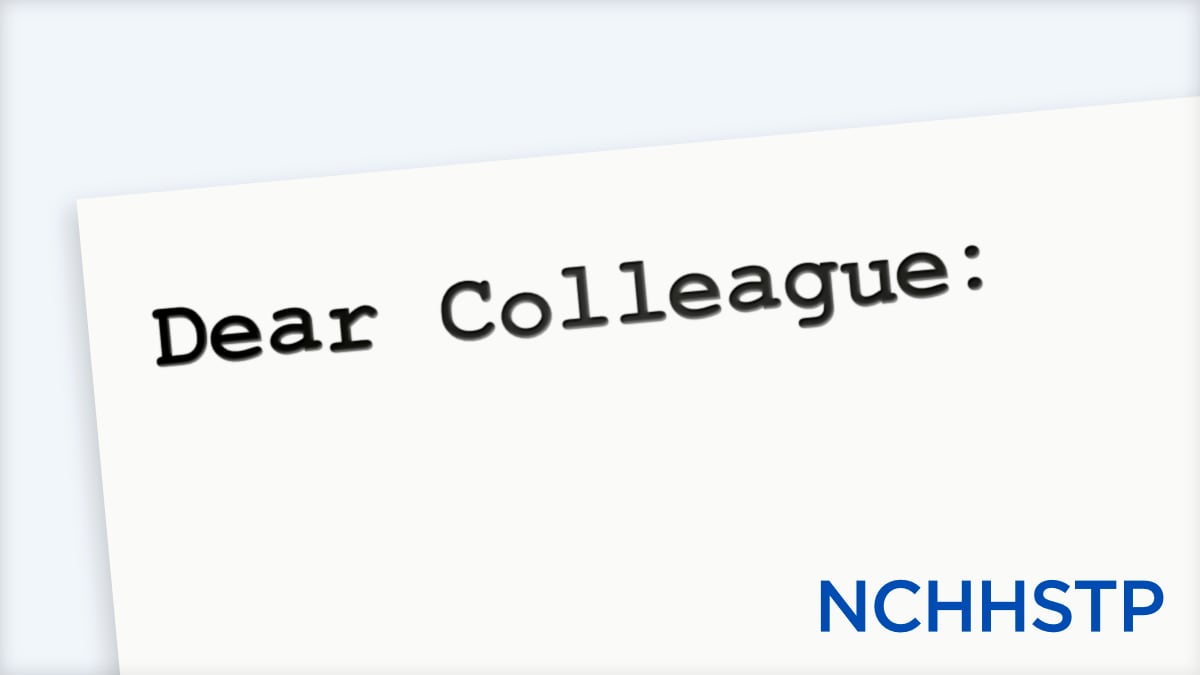At a glance
CDC Awards HIV Prevention and Surveillance Funding to 59 Health Departments.

Dear colleague
August 1, 2024
This week, the Centers for Disease Control and Prevention (CDC) awarded approximately $400 million* to 59 health departments under its Notice of Funding Opportunity (NOFO) PS-24-0047: High-Impact HIV Prevention and Surveillance Programs for Health Departments. With these resources, programs will implement high-quality science-based programs using whole-person approaches to prevent new HIV infections, dismantle structural barriers to prevention and care services, increase health equity, and optimize the health of people with HIV and others who would benefit from prevention services.
These awards are being issued after four years of decreasing HIV incidence and are intended to accelerate progress. This new NOFO combines funding streams for CDC's two largest HIV prevention programs: national HIV prevention and surveillance funding for health departments and the Ending the HIV Epidemic in the U.S. initiative (EHE). Through this new, streamlined framework, CDC aims to accelerate progress in key areas by:
- Applying strategies and lessons learned from previous HIV prevention funding opportunities and extending the focus of the four pillars of the EHE initiative (Diagnose, Treat, Prevent, and Respond) in all funded areas.
- Maximizing recent innovations within each EHE pillar and targeting efforts where they can have the greatest impact. This includes strategies like expanding self-testing programs, ensuring routine and population-focused HIV testing and screening, using telehealth, supporting rapid detection and response to HIV clusters and outbreaks, and leveraging real-time pharmacy data to support treatment adherence and re-engagement in care.
- Improving HIV data collection and use for public health action.
- Minimizing administrative burden for health departments.
- Enabling health departments to further expand whole-person and syndemic approaches to prevention and treatment for HIV and related infections in their communities.
- Continuing to emphasize locally designed, evidence-based, tailored approaches to reach those most severely and disproportionately affected by HIV in each community.
- Supporting strategies, programs, and policies that increase health equity while decreasing HIV incidence.
Everyone in the United States deserves to receive high-quality, comprehensive health care. For many people, this includes the provision of safe and effective HIV prevention tools such as pre-exposure prophylaxis (PrEP). To improve PrEP access and uptake and help achieve equity in this important area, CDC has announced a new competitive supplemental funding opportunity open to the 31 health departments currently receiving EHE funding through PS24-0047: High-Impact HIV Prevention and Surveillance Programs for Health Departments. This supplemental program is aligned with PS24-0047 and aims to accelerate progress toward meeting the National HIV/AIDS Strategy (2022-2025) (NHAS) goal of 50% PrEP coverage by the end of 2025.
Approximately $7 million in competitive supplemental funding is available through the new program, titled High-Impact HIV Prevention and Surveillance Programs for Health Departments: Accelerating Pre-Exposure Prophylaxis (PrEP) Uptake for Ending the HIV Epidemic in the United States. Through this supplemental program, CDC expects to fund up to four health departments to implement activities that will increase PrEP access and uptake among priority populations and eliminate structural and social barriers that prevent equitable access to PrEP within EHE jurisdictions. Additionally, these programs will incorporate elements to increase HIV non-occupational post-exposure prophylaxis (PEP) and doxycycline post-exposure prophylaxis (doxy PEP) awareness and access, including activities with clinicians, non-clinical community-based organizations (CBOs), and persons at risk for HIV acquisition.
By building upon recent successes, embracing EHE strategies, and continuing to center health equity in all that we do, CDC's HIV prevention and surveillance program for health departments will play an integral role in our ongoing efforts to end the HIV epidemic in the United States.
Sincerely,
/Robyn Fanfair/
Robyn Neblett Fanfair, MD, MPH
CAPT, USPHS
Director
Division of HIV Prevention
National Center for HIV, Viral Hepatitis, STD, and TB Prevention
Centers for Disease Control and Prevention
www.cdc.gov/hiv
/Jonathan Mermin/
Jonathan Mermin, MD, MPH
Rear Admiral, USPHS (Ret.)
Director
National Center for HIV, Viral Hepatitis, STD, and TB Prevention
Centers for Disease Control and Prevention
Stay connected: @DrMerminCDC & Connections
- * Since the new funding cycle began on August 1, 2024, the first-year funding awards will cover 10 months. The remaining funding cycles will each begin on June 1 and funding awards will cover the entire year.
